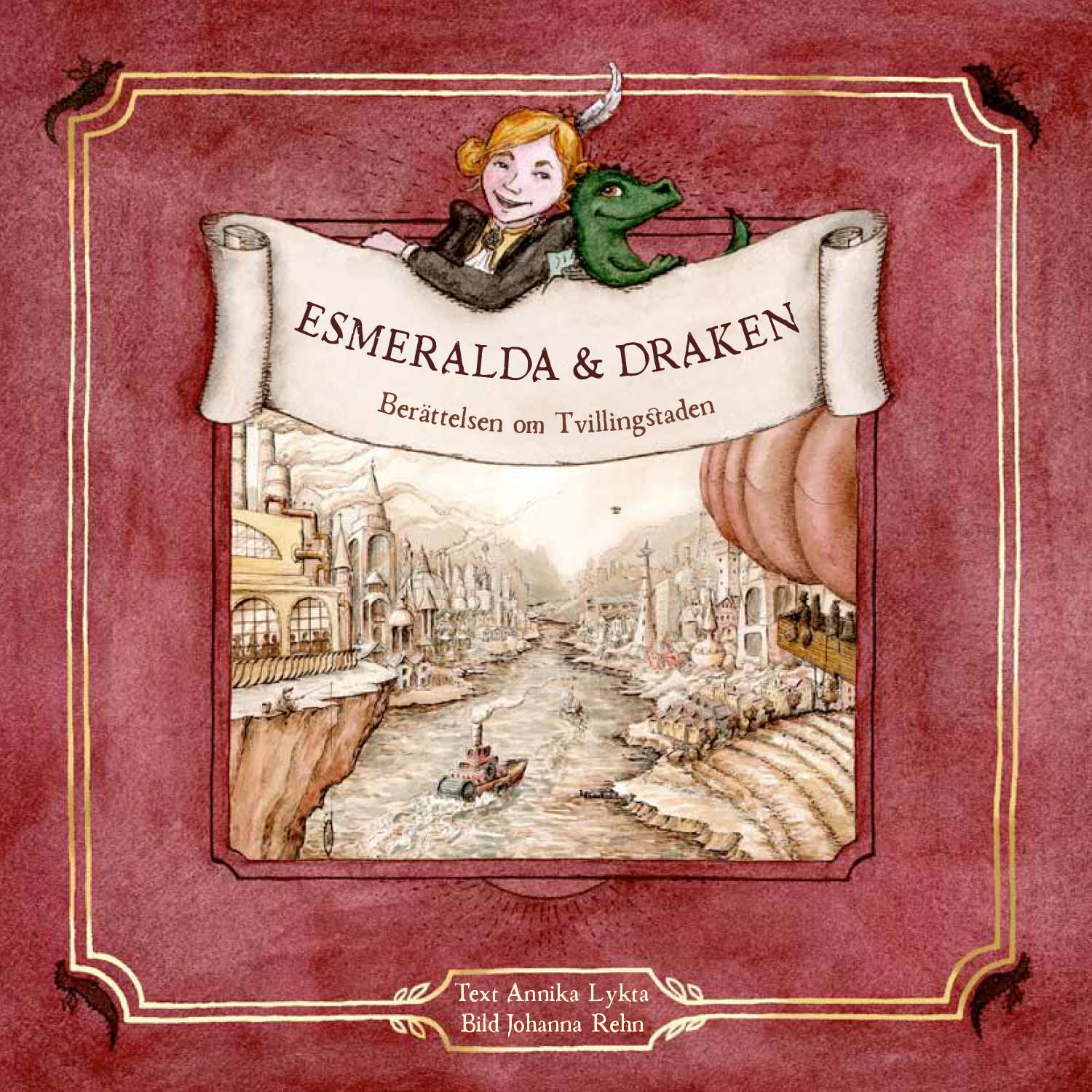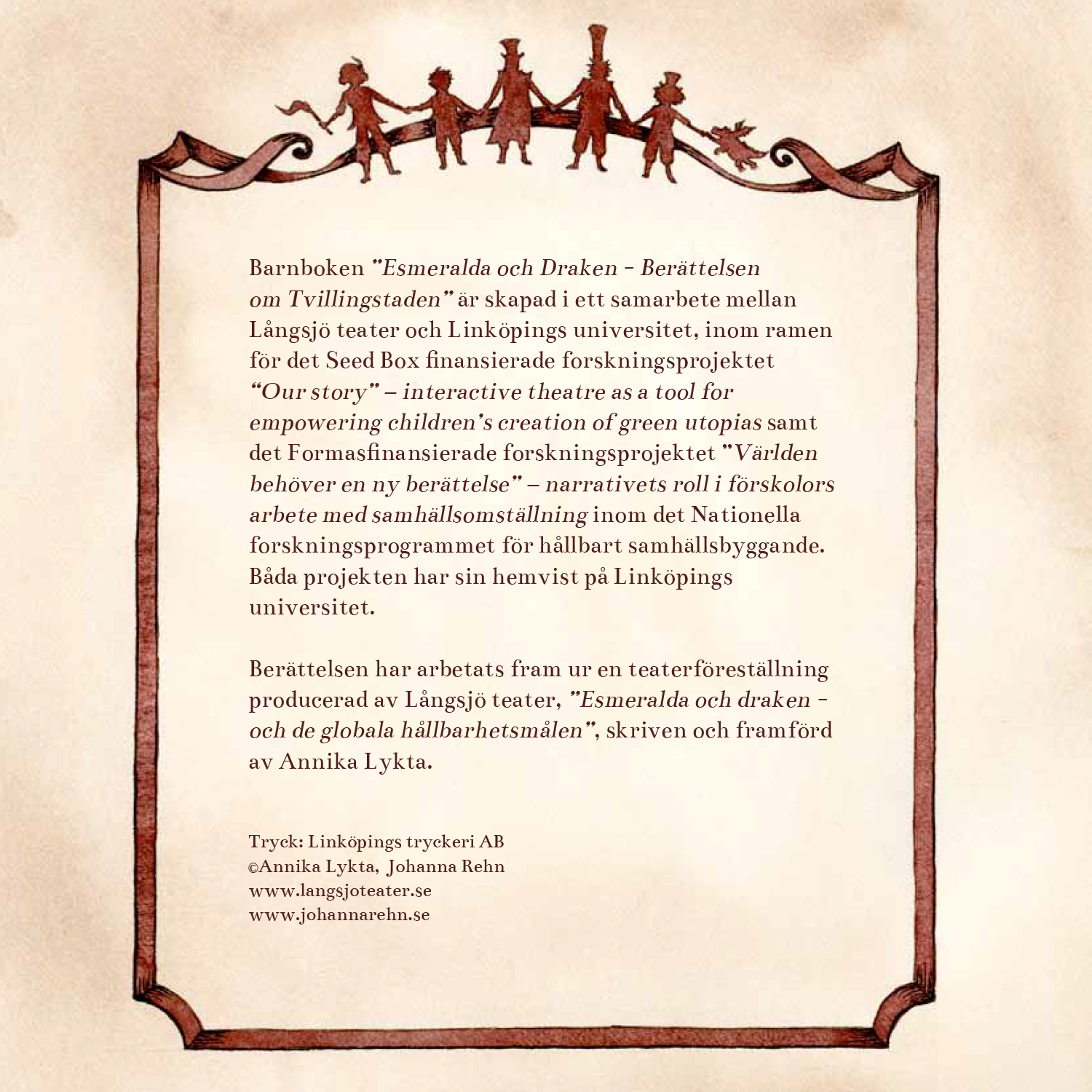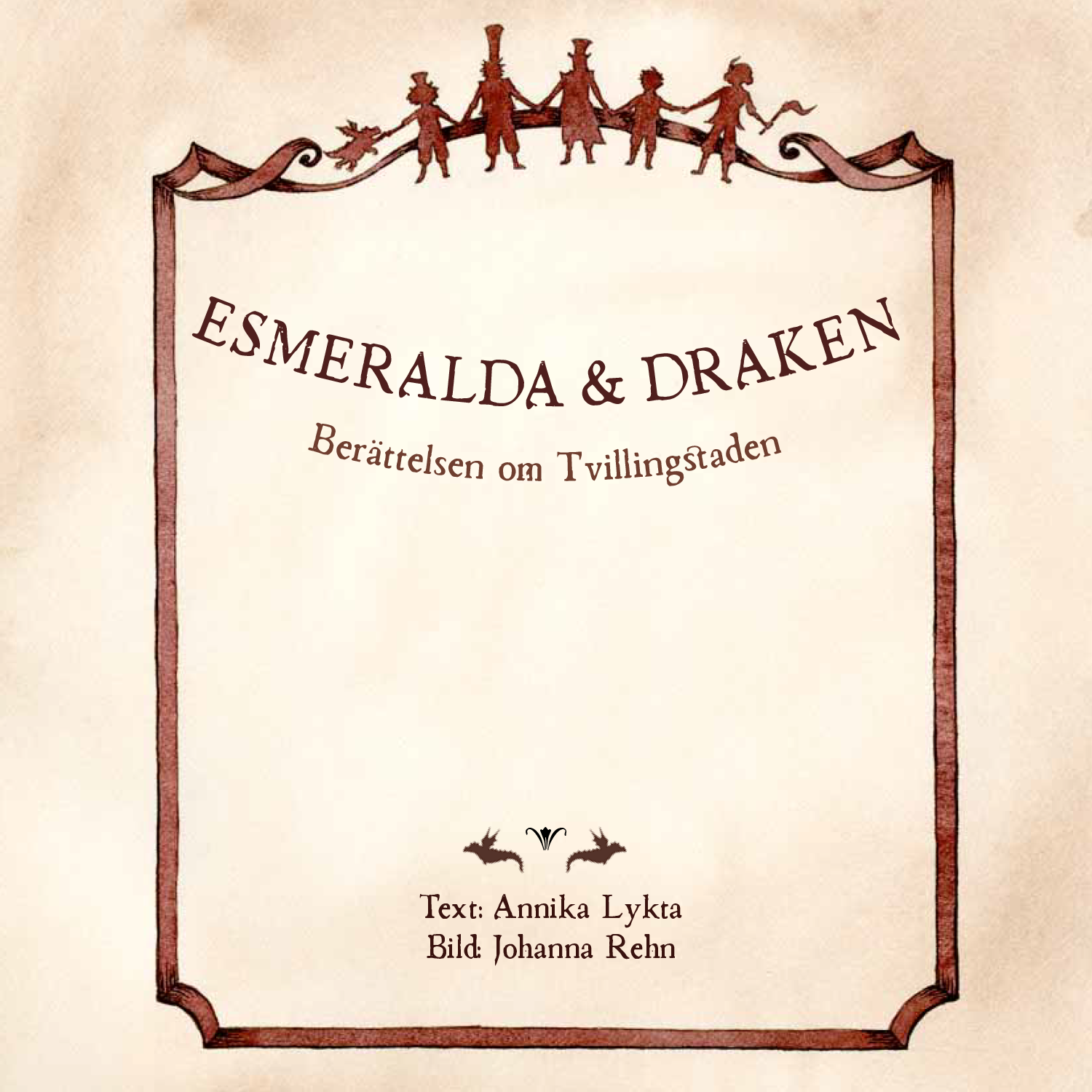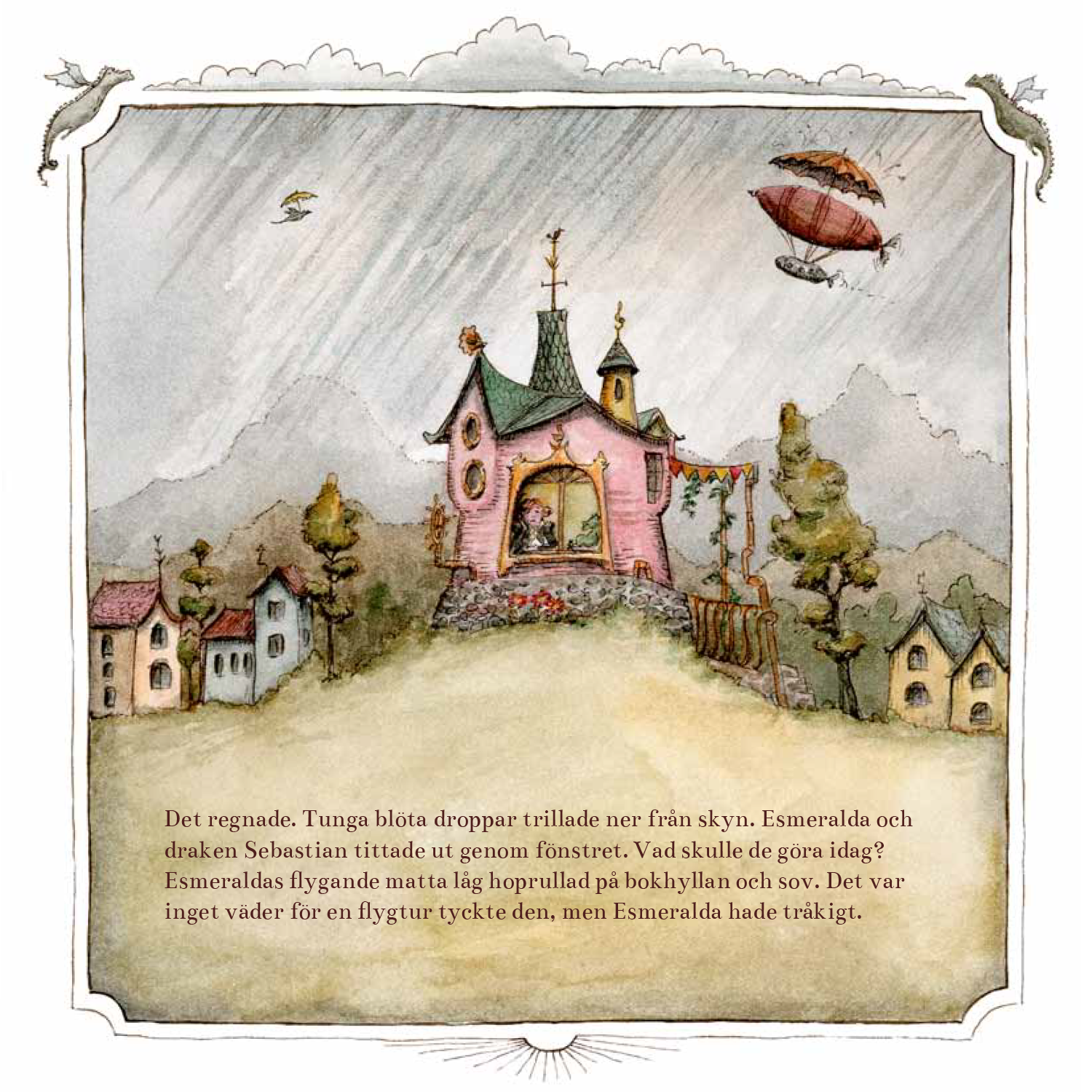The full book is available to order from annika[at]langsjoteater.se
Esmeralda and the Dragon: the tale of the Twin City - English synposis
It is a boring and rainy day. Esmeralda and Sebastian the dragon don’t know what to do. But then Sebastian makes a sound that tells Esmeralda that the dragon has had an idea. “So you want to hear a story?”, she asks, and starts to tell the tale of the Twin City.
On the island of Terra there was a city called Iara, and in Iara lived the twins Sofia and Oliver. Iara lay just next to a river, and on the other side of the river there was the city Epera Both cities were beautiful and with magnificent buildings, and they were constantly growing. But with growth, there also came problems. The river got polluted, and among all things and all the factories that had to be built, it became all the more difficult to fit in the things that people really need. There wasn’t a place for everyone to live, for some it was hard to find work, and many people that lived here were so poor that it was a struggle just to get food.
This was the case for Sofia’s and Oliver’s family. Sofia and Oliver were children, and should go to school, but their family was so poor, that they had to work in one of Iara’s many factories. But even if they had never gone to school Sofia and Oliver had actually learned how to read and write, and they had gotten really good at coming up with all sorts of ideas and innovations.
As the cities grew, so did the tensions between them. Epera’s mayor got angrier about the pollutions from Iara’s factories, and eventually he said that Iara’s citizens were no longer welcome to cross the river and visit Epera. Iara’s mayor, on the other side of the river, was sad about all the problems, but he was too afraid that people would get angry with him, so he couldn’t think of any solutions. One day, Epera’s military were gathering on the shore of the river, and all Iara’s mayor could do was to just sit at his desk and cry. Things were worse than ever, but then one of Sofia and Oliver’s inventions – a small mechanical bird – happened to fly in through the mayor’s window.
When the mayor saw what the children had invented, a glimmer of hope awoke in him, and he invited them, and they started to talk about all the problems that were haunting Iara and Epera. And to the mayor’s relief, Sofia and Oliver started to come up with ideas for how to solve the problems. Soon they had convinced the mayor to pay a visit to Epera and their mayor, and they all got in a boat and crossed the river.
Epera’s mayor agreed to listen to their inventions – solar panels, and windmills, and a machine that could clean the air. More than that, Sofia and Oliver also brought up the idea that factories should actually make less things, and instead of buying new, people should try to fix and use what they already have. Both mayors thought this was a crazy idea, but Sofia and Oliver insisted. What good has come out of all the things that the factories make? The air is polluted, and our cities are almost at war, people are poor and must work more than is health for them. The discussion went on all night, and when the morning came the mayors finally agreed to try it Sofia’s and Oliver’s way.
After that the situation in the two cities got better, and to conclude the story, Esmeralda plays the harp and sings a song to Sebastian the dragon:
“Epera and Iara, two cities become one.
We call it the Twin City”
Suddenly, there is a knock on the door. It is Sofia and Oliver. Esmeralda asks them to come in:
“I have just finished telling Sebastian the story about how the two of you became mayors of our city, and how it was that it got named after you”.
So you see, just like on the island of Terra we also have a lot to gain from realizing the 17 global goals set by the UN:
1 No Poverty
2 Zero Hunger
3 Good Health and Well-being
4 Quality Education
5 Gender Equality
6 Clean Water and Sanitation
7 Affordable and Clean Energy
8 Decent Work and Economic Growth
9 Industry, Innovation and Infrastructure
10 Reduced Inequality
11 Sustainable Cities and Communities
12 Responsible Consumption and Production
13 Climate Action
14 Life Below Water
15 Life on Land
16 Peace, Justice and Strong Institutions
17 Partnerships to achieve the Goal
With this book, we call for more attention to the role of storytelling in environmental communication. The problems and pitfalls in communicating global environmental and sustainability issues to local practices are well known to the community of environmental communication and humanity scholars. Communicative challenges are associated with e.g. invisibility of causes lack of immediacy and direct experience of the impacts, complexity and uncertainty, but may equally apply to the communication process as it is shown that audiences often, due to the gap between environmental information and everyday life experiences, often judge environmental information to be of low credibility. This performance and book build on new directions and insights in the research field of environmental and sustainability engagement, pinpointing the need for more meaningful ways of public engagement in which individuals’ life-stories, narratives, values and preferences are at the core. Based on an analysis of sustainability theatre for early years, this paper suggests:
Narratives and sustainability storytelling have the potential to address global matters and thereby overcome the many challenges traditional science and environmental communication face:
As for this study, the performer, a fictional character, and young children jointly shape and circulate various solutions on how to access food (SDG 1 and SDG 2),
And secondly, the performer, the fictional and non-human character of the theatre play – the Dragon- emotionally engage children in SDG 14 on biodiversity. While bringing emotions to environmental communication, it also addresses non-human perspectives in interactive theatre for early years
Hence, to rethink borders and boundaries and go beyond the global/local dichotomy in communication studies, fictional elements seem to reason with the audience of six´s and thereby empirically contributing to the assumption that narratives and storytelling have the potential to illuminate new issues and insights regarding climatic and environmental change.












